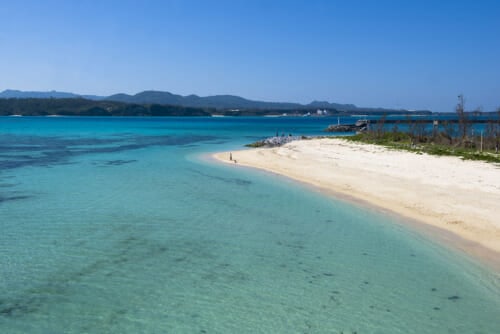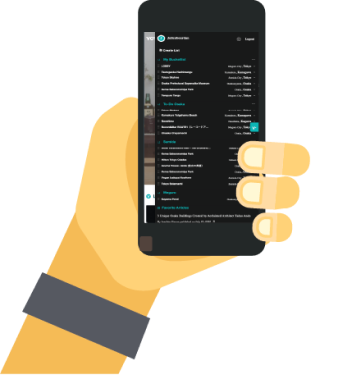After six years of living in Hokkaido, it finally happened: I’d crashed my car.
Ozora Town, or “big sky” in Japanese, is such a fitting name for this place, I thought as I looked through my now-cracked windshield. My car was on its side, engine still running, Highway Star by Deep Purple (Made in Japan, 1972) blaring in the background. “Nobody gonna beat my car. It’s gonna break the speed of sound.” Damn irony.
Still dazed, I took a second to collect myself before turning off the car and putting it in park, four wheels up in the March snow; it wasn’t going anywhere.
In my defense, and contrary to the ongoing music, I wasn’t driving fast, nor was I furious. Perhaps I was just staring at my seatbelt in that moment, thankful for it in an unfortunate accident. But much like the embarrassment to follow (and in writing this article), it just wasn’t letting go.
Up until that point, I had driven a 2005 Suzuki Every Van. It wasn’t a pretty vehicle — serving as a sort of blue-collar eyesore next to my neighbor’s specced-out Toyota Noah. It wasn’t fast (especially uphill), not smooth on bumpy roads, and not sharp around turns. The doors needed to be slammed shut, often more than once. The interior was drab, brown, and lifeless.
But what a wonderful car it was: perfect for camping in the glorious Hokkaido summer, inexpensive, and reliable. It even had a TV in it. And just in case my mother reads this, I wasn’t watching at the time of the accident.
Someone tapping on my windshield brought me back to reality. I smiled and waved a bit sheepishly, saying that I was okay, and finally freed myself from the seatbelt and made the climb up and out the passenger door. A small group of people gathered around the car and began to question if I was injured. At this point, my pride was on life support, but no wounds — internal or external — were found. “This is embarrassing,” I muttered, sitting on top of my car as rubbernecking motorists ogled at me while they crept along the road.
“Would you please call the police? Let them know that I am an American, I live in Japan, I’m unhurt, and most importantly, I speak Japanese,” I asked a lady, her glasses fogging up from her mask as she shielded herself from the biting Hokkaido wind.
Crashing your car is easy; picking up the pieces is difficult. For this issue of Voyapon, I take one for the team and will teach you how to do the latter with ease.
First Things First
First, turn off your engine, place the car in park, and remove the keys from the ignition. It may feel like your life has just gone up in flames, but let’s prevent it from actually doing so. Your next mission is to check for injuries and call 119 if you’re hurt, or 110 to contact the police.
With the phrase kuruma no jiko ga hassei shimashita 車の事故が発生しました, you can inform them that “a car accident has occurred.” After that, you’ll be asked where you are. Do your best to explain calmly, using local landmarks if a street sign isn’t present. It is a legal requirement in Japan to report accidents to the police, and should insurance get involved, not having a police report brings trouble.
Second, calling a tow truck early is a smart move. Often, especially in rural Hokkaido, it takes time for the truck and crew to arrive. For my unfortunate accident, it took nearly an hour and a half. Check your insurance to see if towing is covered. If you’re a member of the popular Japan Automobile Federation, you can get towing services for free as part of your membership. If not, expect to pay up to 50,000 yen for towing your car up to 20 km.
Whose Fault is it Anyway?
In Japan, insurance can be tricky to navigate when there’s a collision involving another vehicle. Broadly, there are two types of insurance: mandatory car liability insurance and voluntary car insurance. Mandatory insurance is required for all vehicles on the road and provides limited coverage, excluding things like property damage and injury. It is popular, and highly recommended, to obtain voluntary insurance alongside it to cover those gaps.
When multi-vehicle accidents occur, fault is determined on a percentage scale according to the police report and insurance investigation. Japan rarely assigns 100–0 no-fault accidents. It’s common to see cases where an at-fault driver receives 80% of the blame, with the other party still held 20% responsible. In these cases, buying no-upper-limit insurance is strongly advised as it protects against inflated repair costs or injury claims. No-upper-limit insurance, known as Museigen no Jidosha Hoken 無制限の自動車保険, is relatively cheap in Japan and may even be required if you use your vehicle for work.
To avoid confusion or dispute, purchasing a drive recorder is highly recommended. They range from 10,000 yen to 30,000 yen depending on features and brands — a worthy investment. Many rental cars in Japan come equipped with them at no extra cost.
Them Northern Roads
Hokkaido’s legend is most expressed in its abundant powder snow. From December to April, the massive island becomes a winter wonderland, and accessing its most remote treasures is no easy feat.
What were once simple drives become a frigid version of Mad Max in slow motion. An hour-long drive in the summer might turn into two in winter. Unlike other countries, Japan doesn’t salt its roads to the same extent, preferring only to plow, which leads to a buildup of ice and matted frost.
At the height of winter, mountain passes often close, forcing drivers onto toll roads that run under the mountains. These are highly recommended in heavy snow. Given their arterial importance, they’re among the first cleared and best maintained.
Departing from Sapporo, toll roads are expensive, but further out into the countryside, these highways, known as kosokudoro 高速道路, are often free. From Ikeda (just east of Obihiro) to Kushiro and from Asahikawa north to Engaru, there are long stretches that don’t require payment.
If you’re stuck on regular public roads, look for the green boxes along the roadside. These contain coarse sand to help you gain traction in deep snow or ice. Apply it before spinning your tires or risk digging yourself in further. Look up and spot the red arrows — they mark road edges during low visibility. Use them to avoid snowbanks.
If you’re not used to driving in the snow, know that speed is your enemy. Build up too much, and sudden braking is a surefire way to end up off-road. Keep to the speed limit or below, and let others pass. Double your braking distance, tap the brake pedal lightly, and avoid sharp maneuvers.
Winter isn’t the only season with danger in Hokkaido. Due to the human population decreasing in the countryside, the population of deer in Hokkaido has exploded. Particularly in East Hokkaido, it is quite common to see dozens of deer snacking on the side of the road, unafraid of the two-ton steel missiles flying by. Use caution when navigating corners at speed, and keep your brights on at night; you’ll be shocked at the number of eyes they reflect.
So, to you, highway star, take care on Hokkaido’s seemingly infinite roadways. Japan’s far north is car country through and through; renting a car or bringing your own via ferry is the best way to experience the frontier. Rest along its many stretches with views unmatched by anything you’ve seen. From vast stretches of unblemished nature to deep mountain valleys and towering volcanoes, Hokkaido is full of opportunity and memories waiting to be made.






No Comments yet!